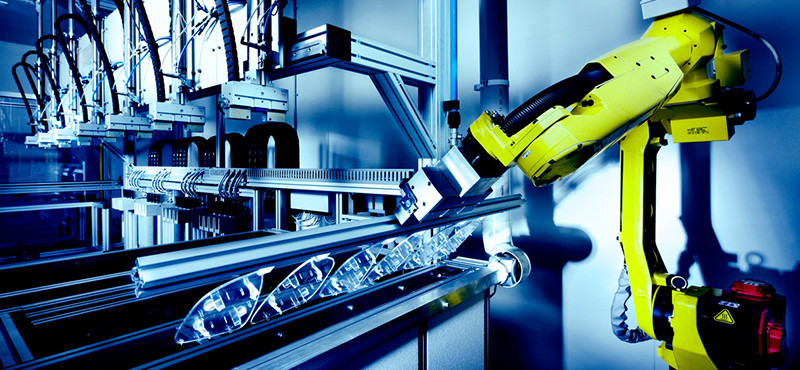The problem
It’s quite common for traditional glass car mirrors to crack or shatter. This is not only a cost and inconvenience to the owner, if the damage occurs during a trip – from a stone for example – it can create a hazard for the driver due to reduced vision. So, is it possible to build a shatterproof car mirror? And what comes next?
The solution
Through a collaborative research approach, UniSA has partnered with Adelaide-based company SMR Automotive, in a partnership that has delivered the world’s first shatterproof plastic car mirror.
In conjunction with SMR, researchers at UniSA’s Future Industries Institute developed a coating to go onto an injection moulded plastic substrate. The coating consists of an abrasion resistant layer, a reflective mirror layer, and two capping layers to prevent environmental damage. The layers combined are less than one-tenth the thickness of a human hair.
By combining materials already available to the car industry, the new design has capitalised on existing availability, while also simplifying the assembly process.
Production began in 2012 with more than three million plastic mirrors manufactured in Adelaide and distributed worldwide, with global sales exceeding $170 million over the five years.
Weighing 50 per cent less than a conventional glass mirror, the plastic mirror has reduced fuel consumption and greenhouse gas emissions. Its durability has also increased safety and reliability for the automotive industry, with a significant drop in mirror failure.
Upscale of infrastructure and capability saw SMR receive $8.5 million in funding from both the South Australian and Federal governments to keep their operation in Australia and to transition from automotive to the emerging advanced manufacturing sector.
Dr Bastian Stoehr, who undertook his PhD under the combined supervision of both UniSA and SMR, and now works at SMR as Design Engineer, says the collaboration between the two organisations has been an important factor in the ongoing evolution of SMR’s operations.
“A fruitful collaboration between academics and industry is greater than the sum of its parts. Industry, naturally, is highly goal-oriented and application-driven, whilst academia strives for a fundamental understanding of the topic. Combining the two qualities can not only lead to new technical discoveries but also generate new insights into future market opportunities" Dr Stoehr says.
“Far beyond commercial success, SMR Australia and UniSA are benefitting from direct and indirect outcomes now and in the future. For example, as an immediate result of the collaboration, SMR Australia constructed a world-class advanced surface technology manufacturing facility. By adding this new capability to its manufacturing portfolio, SMR Australia successfully capitalised on this opportunity and is now supplying advanced interior lighting products for a European supercar manufacturer. This “hidden till lit” technology is world leading and offering new design possibilities both inside and outside the car.
In parallel, UniSA has been consistently collaborating with SMR Australia for over 18 years, utilising the unique opportunity to expose PhDs and researchers to highly applied collaborative research.”Dr Bastian Stoehr
Design Engineer, SMR
Industry Associate Professor at UniSA’s Future Industries Institute, Dr Colin Hall, says UniSA and SMR continue to collaborate to explore new innovations and answer the “What’s Next?” question.

“We are currently partnering on new technology to expand SMR into the space. Bringing their advanced manufacturing know how to the space sector in the area of optical components for satellites.
“Our partnership with industry shows how universities can deliver real impact as we help companies to innovate and improve manufacturing processes. This will not only result in better products but will also generate more opportunities to grow our economy.”
The collaboration has allowed SMR to expand its Research and Development team and build a new advanced manufacturing facility for thin-film coating in Adelaide.
Since the release of the plastic mirror, the technology has been adapted to an attractive and functional decorative trim which can be installed internally or externally on cars. SMR are in the process of significantly increasing production capacity to meet the demand of their European and North American customers.
Partners involved

Related services
Contact the Enterprise Hub
Get in touch with us to find out how we can support your business needs.
Make an enquiry online or call us to discuss your idea




